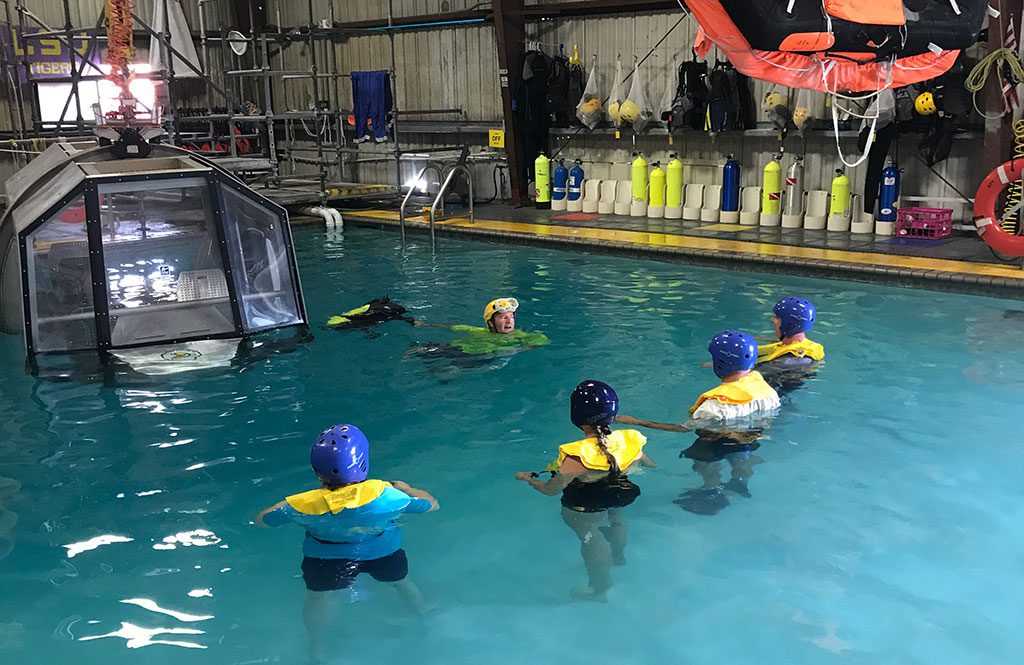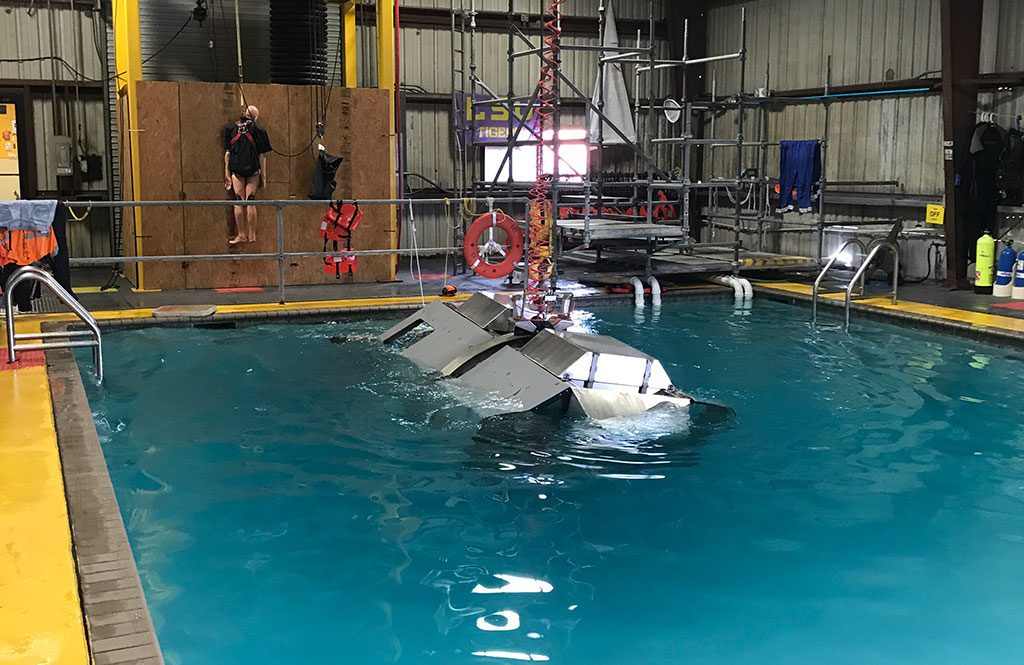Countless times every day, seaplanes take off or land across the world. The vast majority of those events take place without incident. Of course, seaplanes are not immune from mechanical failures or pilot error. When an aircraft comes to rest in an unusual orientation in the water, its occupants are faced with unique—and, frankly, frightening—challenges.
Underwater Egress Training: Testing the Limits of Situational Awareness
The importance of “Situational awareness” is a concept that is drilled into pilots beginning with their very first class in flight school. We are all taught that to operate an aircraft safely, we must, at all times, maintain a clear understanding of the condition of the aircraft, the forces acting on it and our reactions to those forces.
I recently had the opportunity to participate in seaplane safety training, and as a seasoned pilot I will tell you that it put my situational focus to the test. Southern Seaplane, Inc. in Harvey, Louisiana, offers an intensive three-day session that covers all aspects of seaplane safety. The course was created by President and Director of Operations Lyle Panepito after years of seeing many experienced seaplane pilots make significant errors, especially during landing, takeoff, and taxi.
Day 1 of the program is Ground School, Day 2 is Marine Survival Training, and Day 3 is Flight Training. I was invited by an aircraft insurance industry colleague to take part in the course, and while I couldn’t attend the full three days, I did receive a briefing of the Day 1 content and participated in underwater egress training on Day 2. What took place in the pool was eye-opening to say the least.

Training Every Over-Water Pilot Should Have
The rig used for underwater egress training was designed for helicopters, but is easily modified to simulate a seaplane. My fellow students and I sat perpendicular to the longitudinal axis of the ship so when the rig was lowered into the water and then rolled, we would have the experience of being passengers on a seaplane that had flipped upside down over its nose.
Our instructors led us through five exercises of increasing difficulty. The drills included escaping from the “wreck” through windows and exit doors, with the more challenging exercises requiring us to operate a latch. Despite my years of training and experience in maintaining situational awareness, I have to confess that on one occasion I became very disoriented and essentially “failed” the exercise.
In a training environment with plenty of “emergency exit” cutaways available and watchful instructors at the ready just feet away, my confusion about how to make my way to safety resulted in nothing more serious than a minor bruise to my ego. But, of course, I understood what the real-world consequences would have been. That realization reinforced what we all know about flying: the best way to prevent a serious incident is to never stop learning. As I returned from Louisiana to my home in Chicago, my flight passed over Lake Michigan and again I thought about the importance of underwater egress training for any pilot or crew member that is involved in over-water flights.

Key Considerations for Underwater Egress
One of the sobering things I learned in the training is that a significant percentage of fatalities in seaplane accidents don’t result from impact, but from drowning while trapped inside the aircraft. That fact made my takeaways from the session even more valuable.
I shared a number of key points about underwater egress with my colleagues when I returned to the office, including these:
- In an underwater egress situation, seconds seem like minutes, which can lead to a nearly immediate fear that you are running out of oxygen, making it harder to maintain situational awareness.
- Despite the stress, patience is key. Experts emphasize that you should never release your seatbelt until the water stops rushing into the aircraft. Unbuckling too soon can cause you to be tossed around the cabin by the current, making it even more difficult to orient yourself and find an exit.
- Having the layout of the plane memorized is a must. We were in clear pool water during the day, but it was easy to imagine the degree of difficulty increasing dramatically in murky water or at night. Be mentally prepared to navigate the cabin by touch rather than sight.
- Do your best to remain calm and slow your breathing before you take a final breath in preparation to make your escape.
The Benefits of Aviation Egress Training
While I can’t say I’m eager to be in a submerged aircraft ever again, I am very glad I participated in the training. I have no doubt that every flight crew member can derive a number of benefits from this kind of experience.
First and foremost, it will prepare you to respond more effectively in an emergency, thereby making any over-water flight you are on safer for all aboard. In doing so, it makes you more aware of the risks you are facing, and greater awareness is the key to risk mitigation. The fact that you’ve completed underwater escape training can also be a noteworthy addition to your resume. And although there is no guarantee that it will improve your standing in the eyes of an insurer, it certainly can’t hurt.
Note: Jessalyn Hendricks is an experienced pilot, Certified Flight Instructor, and underwriter for Global Aerospace (Chicago).
To find out about our aerospace and aviation insurance offerings, please call or email at your convenience.